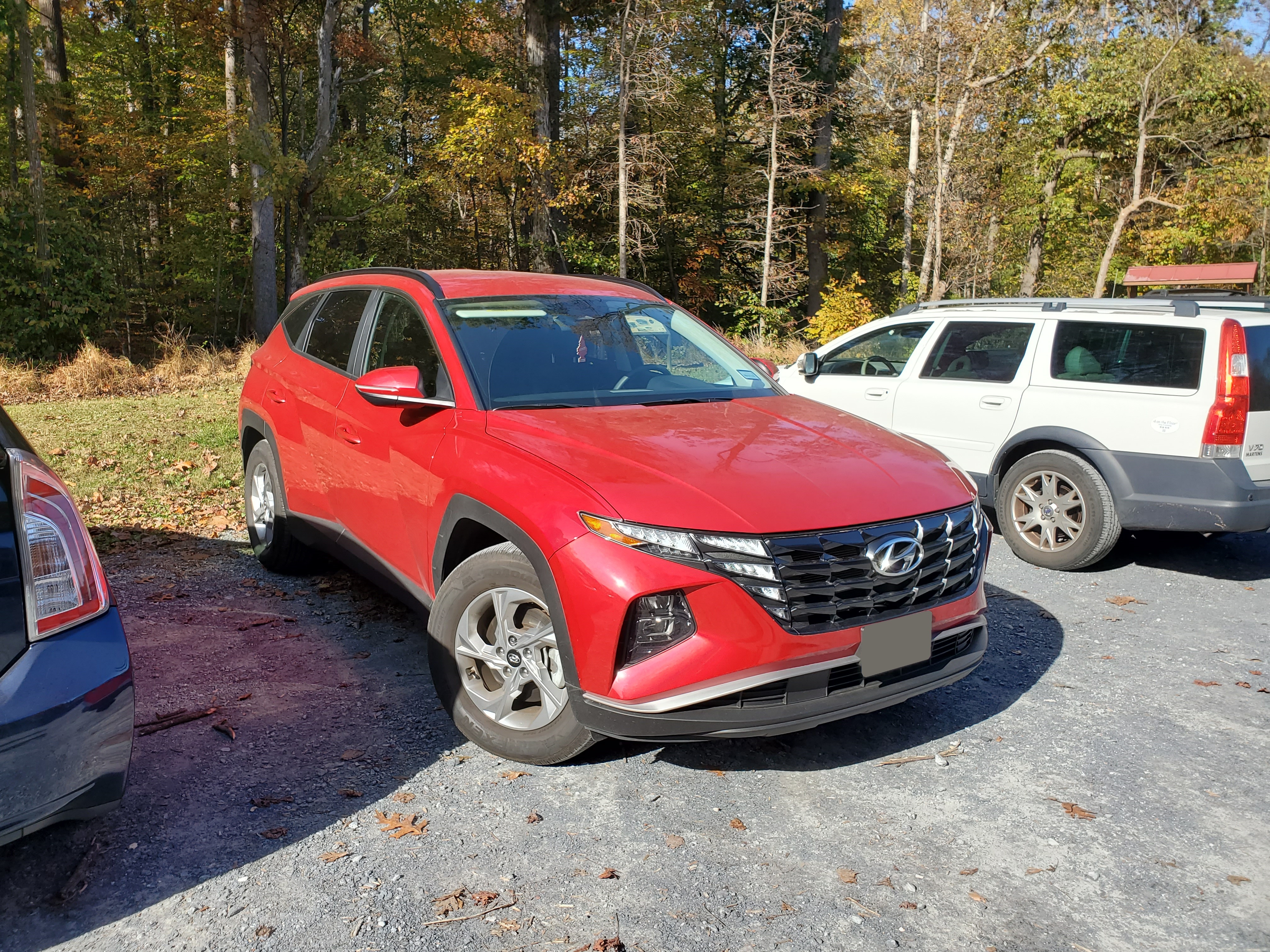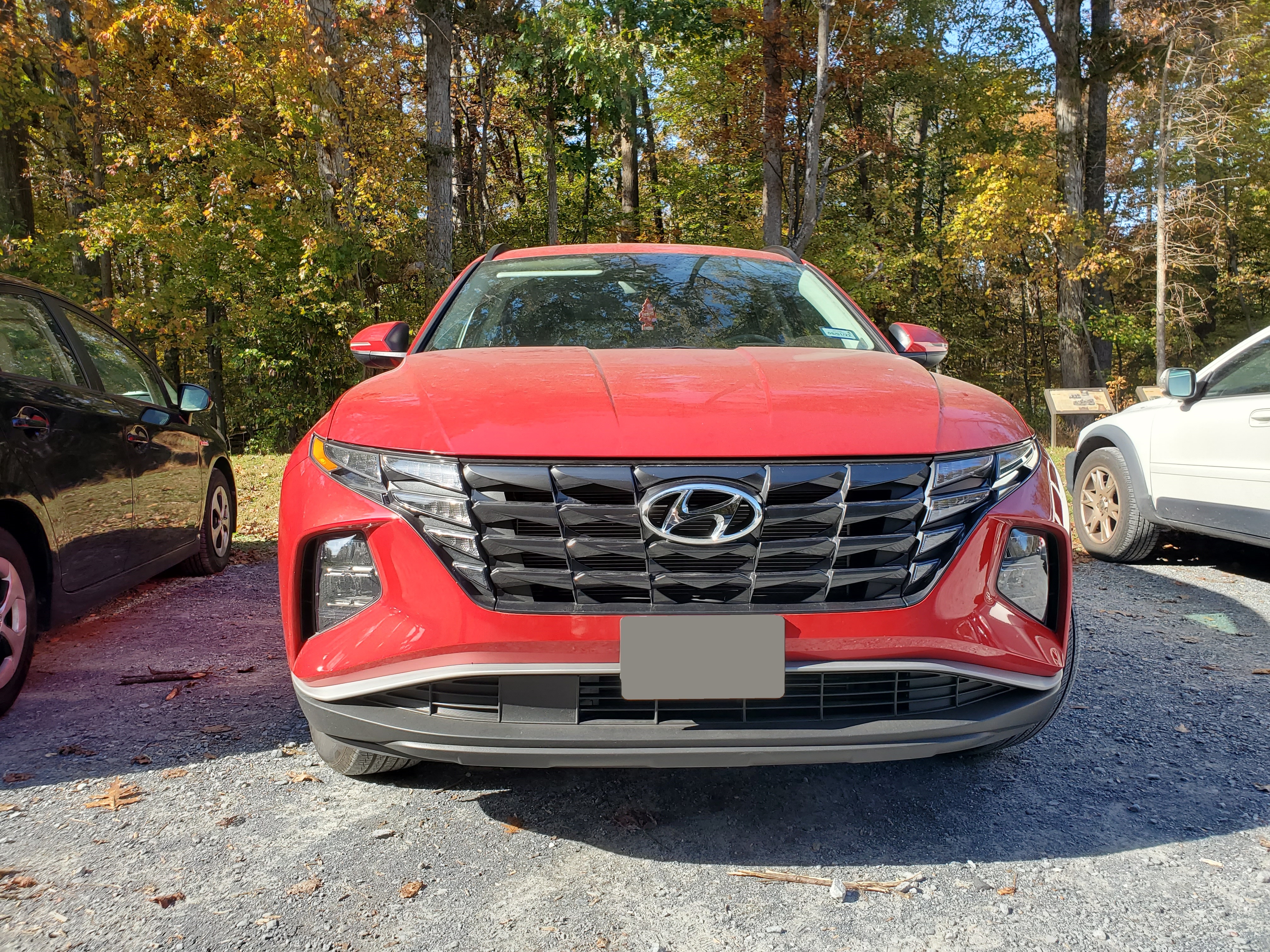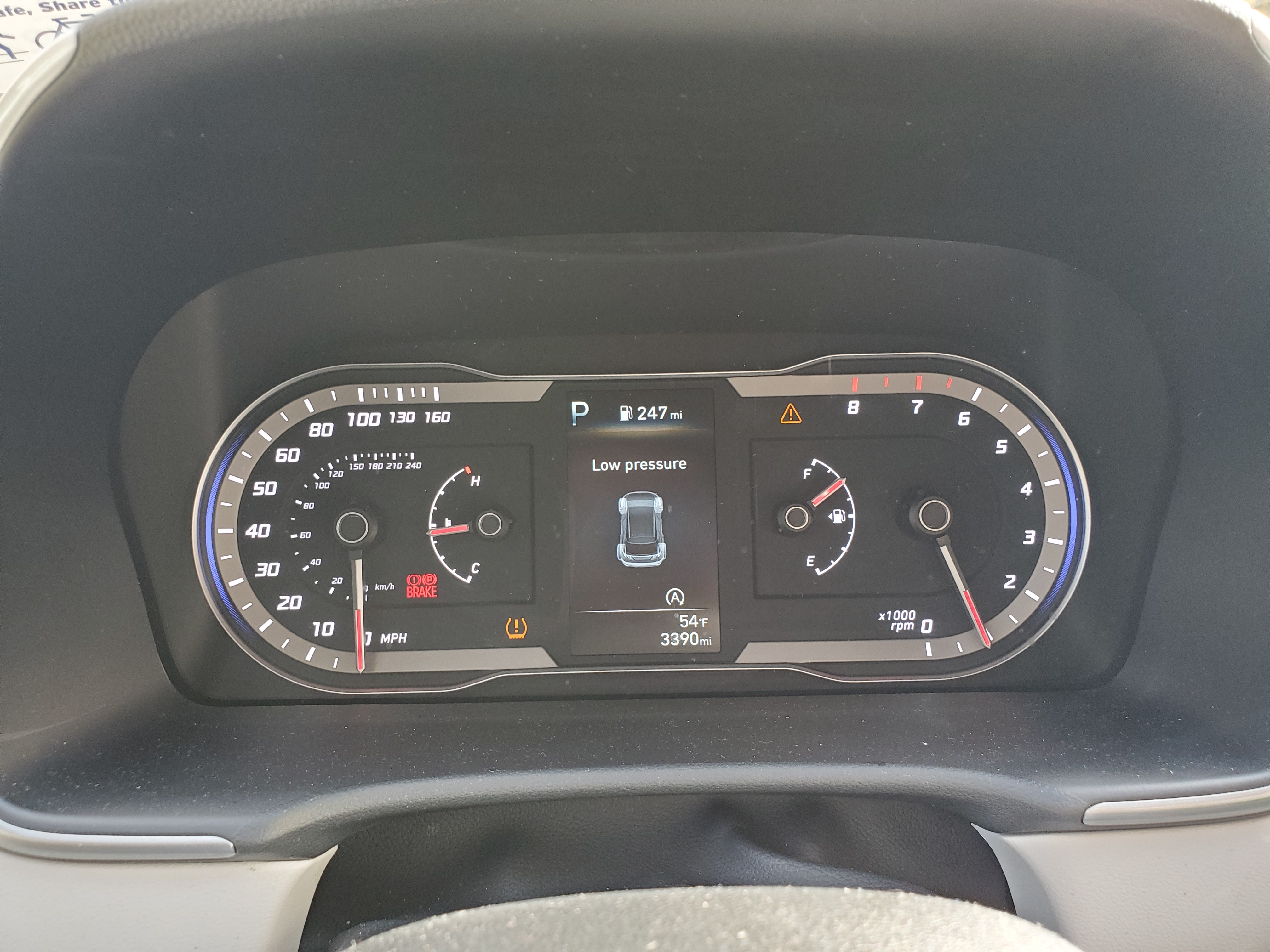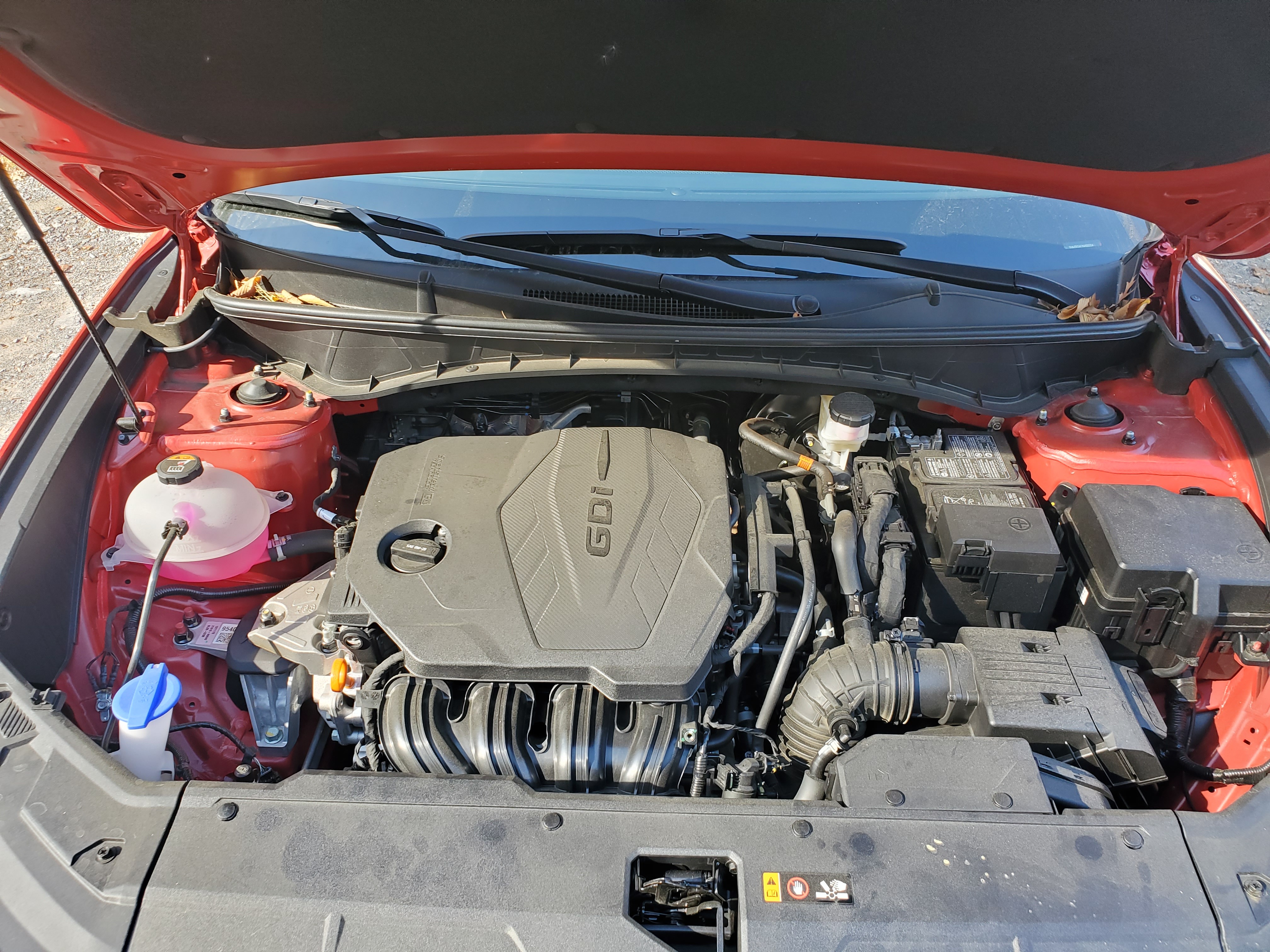
It is a widely accepted fact that compact crossovers have exploded in popularity as the new car of choice for American car buyers. By and large, these vehicles offer perceived value adds such as greater interior space, a higher driver position, greater power, and all wheel drive, while compromising on other metrics such as affordability, fuel economy, and crash compatibility with smaller road users such as small cars, bicyclists, and pedestrians. This increasing popularity is reflected in the statistics of the car we drive; according to Joey Capparella of Car and Driver, as of October 2021, unibody crossovers occupied 13 of the 25 best-selling cars in the US, with mainstream sedans like the Toyota Camry and Corolla as well as Honda's Civic and Accord being outsold by their respective competitors to the Tucson, their RAV4 and CR-V respectively. Capparella even goes on to mention that the Tucson, which takes 22nd place, is demonstrating a dramatic increase in sales compared to last year (though some of this can certainly be explained by the usual jump in sales associated with the release of a new model.) It is apparent that the modern automotive landscape is increasingly characterized by the prevalence of these compact crossovers. Given the Tucson's strong sales, it is a perfect example case to study the popularity of these vehicles, and their place in the material culture of early 2020s America.
It seems as though the early 2020s are an interesting crossroads of automotive industrial design; SUVs are skyrocketing in popularity, yet the need for them to replace more road-appropriate cars like station wagons and sedans has forced manufacturers to give their sport utilities more aggressive, road-hugging designs, or otherwise lean into purported offroad capability. On the other hand, new sedans are also compelled to appear more sporty and capable, in order to offer an implied capability-based value that can compete with the sheer size of SUVs. Amid all of this, automakers must also contend with the rapidly growing popularity of electric vehicles, which have very different design requirements, namely that they offer more versatility with powertrain packaging than internal combustion cars do, while also requiring less space for cooling radiators and exhaust systems, resulting in changing expectations for vehicle styling that it seems automakers are still trying to grapple with. Ultimately, this results in a percieved need for more charismatic and aggressive vehicle designs. This indeed is a trend reflected by the styling of the new Hyundai Tucson; the smooth edginess of the 2010s is now firmly yesterday's news, in favor of bolder, polygonal forms and fascinating, if somewhat bizarre, light fixtures.



The Tucson's boxy shape is unavoidable due to its generous internal space, as is expected of a small SUV, but Hyundai sought to disguise this with carefully shaped lower body cladding as well as black roof rails that obscure the roof's true height. That lower cladding, as well as the bulbous, angular fenders, give the car a sort of "coke-bottle" shape not unlike muscle car designs of the late 1960s and early 1970s. Those fender flares blend into large, angular wheel wells as well as muscular-looking front and rear fascias, with front and rear lower body cladding acting to visually imply greater approach and departure angles than cars such as this can really have. Those who yearn for the full-width taillight assemblies of the 1990s need look no further; the taillights are visually tied together with a bar all the way across the rear hatch, while the prominent and numerous front driving lights blend into a grille-light combination feature that runs across the front end. Up front, Hyundai continues the trend of vertically separating the driving lights from the headlights, with all of these units using LEDs, a nice feature on a lower-level model. The final attempt at reducing the visual bulk of the vehicle was done with the rear hatch, where faux metal inserts frame the rear window, below which the outer fascia of the door is cut away slightly. This somewhat saves the Tucson from a too-bulky rear end that makes it look like a minivan, but to some extent, that effect is unavoidable.
Fortunately, Hyundai's efforts to streamline and slim the appearance of the Tucson have not compromised interior space; not only is headroom extremely generous, but rear seat room is too. The Tucson also boasts a very deep trunk area, resulting in a practical and utilitarian cabin space. It's clear enough that cars like this are the modern equivalent of the station wagon; a sedan-derived family car with more room and payload. Unlike the Country Squires and Roadmasters of yore, however, that space is gained through a taller body, rather than a long cabin.
Inside, the car's tone is perhaps more muted, but this is understandable; the same hard-edged, ambitious treatment for the interior would risk making it less inviting. The interior thusly looks much like other Hyundais of the 2010s, with large, relatively flat expanses of textured plastic along with a simple center stack. Only in the small details does the interior design really break away from their standard fare; vents have become sleeker, a new T-grip shifter has been installed, along with a more streamlined control cluster for the parking brake and drive mode controls. Additionally, the instrument cluster has been streamlined as well. The classical two-dial instrument cluster is finally a thing of the past, with two semicircular gauges framing a multifunction display, a solution that ends up being compact, visually attractive, and slightly more difficult to read than the older design. The center stack has become a sleek, brutalist slate, centered around an infotainment screen. This infotainment is of the lower-end type, a wholly smartphone-reliant system. While this type saves development costs by outsourcing infotainment functions like navigation and media playing to the smartphone, it fails to leverage this effectively in practice due to a clunky and difficult user interface. In the past, infotainment itself was an option, and a normal stereo was the standard; we have now reached a point where infotainment is a guarantee, and its simple usability is the option.


While the infotainment perhaps falls short, the Tucson's true strength lies with its driver assistance functionalities. It boasts adaptive cruise control, as well as a lane following assist that performs reliably and smoothly, inviting little driver intervention, and if something goes wrong, it also comes with collision warnings and emergency braking. Perhaps the most curious element of this sophisticated software suite is an automatic warning for when the car in front of you is pulling away. The usefulness of this seems questionable, since the driver is already gazing forwards, but perhaps it is an effort by Hyundai to automate every aspect of stop and go traffic. Or perhaps they presume that the driver, while stopped in traffic, would use the opportunity to check their phone or otherwise disengage from the driving process, and this alert is a way to drag them back in when circumstances change? Either way, the Tucson's user experience is a strongly automated one, and the assistive tools provided are certainly an inviting crutch to rely on while driving. However, assistive technologies are only part of the driver experience. With true self-driving still over the horizon for most applications, the driver-vehicle interface is still as crucial as ever.
The crux of this interface is of course the vehicle's steering and handling. The steering wheel is a strange four-spoked affair that calls to mind the flattened, non-circular yokes of F1 cars while retaining the outer rim. Steering feel is quite muted, thanks to an electric power steering system, though steering effort is generally nicely weighted. At low speeds, the wheel is easy enough to turn, and at highway speeds, resistance is dialed up enough to encourage smooth and measured driving. However, the steering system is solidly an input, not a feedback; the driver receives little input through the wheel even when on rough pavement. However, the Tucson's ride more than makes up for it, with a harshly damped suspension that communicates every bump and irregularity in the road. Indeed, road feel is good, perhaps too good, as the stiff suspension fails to leverage the Tucson's longer suspension travel (one of the features crossovers supposedly excel at) to soak up bumps. Instead, most of the suspension's travel goes unused as the passengers are bumped and jostled harshly, even on well-paved roads. However, a stiff suspension does not automatically mean confident road manners, and the Tucson is a fine example of this. The soft springs and high center of gravity do little more than the bare minimum to control body roll, and cornering feels dull and unenthusiastic, if not desperate. The steering tune provides a sort of simulacrum of sharp turn-in, but little more than that; in short, the Tucson, while capable of handling twisty roads without simply rolling over, does so neither with alacrity nor confidence.


It feels as though the Tucson's ride and handling have been designed as a sort of rhetorical point, an argument that a crossover can still be sporty like a sedan, but this pales in practice. Otherwise, perhaps it is an attempt to remember why we ever put "sport" in "sport utility vehicle," an effort at improving a crossover's road manners to the point that it can be considered a higher-performing option. In a holistic sense, Hyundai could have done much better by softening the dampers to reduce the sickeningly harsh ride, and simply accepting that a budget-oriented vehicle with a high center of gravity is unlikely to exhibit the sort of dynamic driving capabilities that the plethora of sports-oriented sedans sold today currently offer. If there's to be a silver lining here, it is that the Tucson's cabin is fairly quiet, and while the suspension transmits road noise strongly, engine and wind noise are very well-controlled, even at higher speeds, and the cabin is comfortable enough for road trips.
Power comes from a 2.5L direct-injected four cylinder, which makes approximately 180 horsepower and 180 lb-ft of torque, reasonable figures for a midsize car like this. This engine is hooked up to an eight-speed automatic gearbox, which in this case drives only the front wheels. Acceleration and passing power are both strong, helped by the quick-shifting transmission, and between the muted engine noise and the transmission's programming, shifts are unobtrusive. A switch next to the shifter allows the driver to choose between a normal driving mode and a sport mode, which alters the shift policy and engine throttle behavior, and with this, power delivery becomes snappier and more direct, and shifts become firmer and happen later. A manual mode is also available, but with so many transmission speeds, there's little reason to use it save for holding a specific gear. In general, the Tucson's powertrain manages to be capable, particularly for more demanding driving, without seeming too unrefined or aggressive. Modern cars are faster and more powerful than ever, and this crossover is no exception; on curvy, narrow roads, with the acceleration available, it is easy to allow the Tucson's speed to exceed its handling capabilities.


Adding it all up, the Tucson feels like a somewhat confused car; a utilitarian wagon, made more marketable, yet less affordable, by the addition of more power, weight, and size, made more usable by modern electronic niceties, but still unable to live up to a sporting character that feels as though it was forced upon it. The Ford EcoSport felt somewhat similar, and in that case I concluded that it was a car attempting to serve two masters, yet succeeding at satisfying neither. That's not precisely the case here. Hyundai has indeed succeeded at marrying the easy, sensible family car and the capable, imposing truck, and has reached a sort of happy medium, yet that medium itself feels strangely out of proportion, like a subtle caricature. Perhaps the car itself isn't confused, but rather, is designed to be marketable to a confused set of consumer requirements. Taller, heavier vehicles are exploding in popularity because of the feelings of safety and control that they sell, and part of that feeling of control stems from engine power and performance. The "car as refuge" is further reinforced by conspicuous assistive technologies that actively remind the driver of their presence, yet the stiff suspension and aggressive styling add just enough edginess, just enough flair, to the Tucson's experience, to avoid it being seen as a mere child transporter. In short, the modern family car must be safe, practical, defensive, and actively reassuring, yet it cannot be allowed to be seen as frumpy. Any number of things could have been changed about the Tucson that might have made it a "better" car; it could be smaller and lighter, with a lower ride height and roof conferring far better handling with a small sacrifice in utility. It could be even more aggressive, with a wider stance and firmer, grippier suspension for real handling. It could be a wannabe Jeep like Ford's Bronco Sport, a 4x4 SUV on a unibody sedan platform. It could even be a frumpy, dowdy MPV, with a boxy cabin and low floor for ultimate practicality. Any of these options are mere exaggerations of what the Tucson already promises, yet its presence as we know it makes it perfectly clear that these things were determined to be less desirable. Is the Tucson a parametrically optimized vehicle? Not by any stretch of the imagination. But any flaws in its design are designed-in flaws, for this is a car designed for the consumer, designed to be bought, not designed to be used to the utmost extent of its capability. This might seem somewhat cynical, but we should remember that cars are not only machines with parameters and attributes, they are also consumer goods, like furniture, microwaves, and cell phones. At the end of the day, a strangely sharp throttle and overpowered engine that wastes gas is a selling point; the buyer will be surprised by its acceleration during their brief test drive. Its tall roof and spacious, drag-inducing cabin is a selling point; the buyer will marvel at its minivan-like space when all they needed was just that, a minivan. The tentative, fearful commuter, so painfully aware of the dangers of driving, will see the Tucson's plethora of safety features and proclaim "this is the car for me!", even when they might be made even safer still by choosing to use public transit instead of driving to work. In the automotive world, vehicle design is not an optimization problem, because human desires are not optimized. Technical advantages or deficiencies pale in front of the sheer strength a qualitative conclusion, a vehicle-mediated textual message represents. What is that textual message, then? What is communicated by the Tucson?
It's a bit difficult to read the Tucson, mainly because in so many ways it is so perfectly representative of how modern cars are built, how they are designed to feel and behave for the driver. But perhaps that's just the thing; the Tucson has all the stereotypes of modern car design, every design feature and quirk captured in one. Its infotainment is conveniently phone-driven, yet still driver-centric on account of its design, feeling as though the only use case imagined by the designers was for only the driver to connect their phone to it, and wirelessly at that. It boasts a great number of driver assistance features, all to ease the act of driving, even to make it more accessible; with the Tucson, the driver doesn't need particularly good reflexes or fine motor control, because the electronics can mitigate those things. The Tucson is even shockingly fast for a family car, despite its languid road manners and tall structure; performance for its own sake, rather than to strengthen the driver-vehicle-roadway dialogue. What would we call a car that so perfectly exemplifies everything good about modern cars, yet everything bad about them, too? Perhaps the Tucson is a eulogy to the car commute. The average American commutes in their own automobile, and carpooling has decreased in popularity over the last couple decades. This means that in a statistical sense, a new car is most likely to be used for commuting, rather than specialty tasks like hauling cargo or driving for pleasure. The Tucson feels perfectly prepared for that. It has effectively automated the task of sitting in stop and go traffic, and with all of its warning systems and sensors, parking downtown, or indeed simply hunting for parking in the first place, is a less stressful business than it used to be. Plentiful power and speed, along with a quiet cabin, provides the driver a sort of budget luxury experience, while docile handling soaks up irregularities like driver fatigue. The Tucson exemplifies the qualities that people claim makes a car commute preferable; Instead of being a simple necessity dictated by long working hours, poor public transit service, and sprawling, car-oriented cities, commuting by Tucson is safe, quiet, easy, fast, and sensible. Of course, all of these supposed benefits of car commuting are somewhat misrepresented; commuting by car is nowhere near as safe as commuting by public transit, and simple geometry means that car commuting requires orders of magnitude more space than other solutions like mass transit or bicycling. Additionally, car commuting puts more vehicles on the road, resulting in far greater urban noise pollution, a public health and environmental justice problem, while simultaneously using infrastructure infamous for its function in reinforcing race and class divides in American cities. The costs of car commuting are high, but fortunately, cars like the Hyundai Tucson externalize many of them. Passing through urban areas in a quiet, filtered cabin, the driver is insulated from their noise pollution or the particulates their tires emit. Behind the wheel, they are oblivious to the greater danger tall, heavy vehicles like crossovers, trucks, and SUVs pose to other road users. The Tucson's message is its insistence that car commuting is simply a sensible option, that it is value-neutral, rational, even. The Tucson presents a familiar, comfortable environment with which to traverse the built environment, and in that regard, it is as obsessed with the fantasy of self-determination as the BMW 3 Series, albeit in a totally different way. The Tucson seeks to remind you of how easy, how free of costs and considerations the act of commuting by car is. Where the 3 Series provides a new, sharper, more focused lens through which to view the road, the Tucson provides a set of blinders; both are designed for a fantasy of wide, empty avenues and sweeping curves, a fantasy that is distinctly unachievable in a world populated by people. And yet, is it not our ability to indulge in fantasy that separates people from beasts? Is it not our ability to imagine that which has not yet come to pass, that which may never come to pass, that makes us so unique? Perhaps that's why people love cars like these; we're not buying them for the world we actually live in. We're buying them for the world we wish we lived in. So if you have no choice but to drive to work, no chance of biking, or taking the bus or train, or simply walking, then why not indulge in that fantasy? Once in a while, when the road's empty and everyone else is asleep, maybe you can get away with putting your foot to the floor and your cares behind you, and just for a little while, you can live the dream that car advertisements provide.
I rented this car with Turo, a crowdsourced car rental platform.